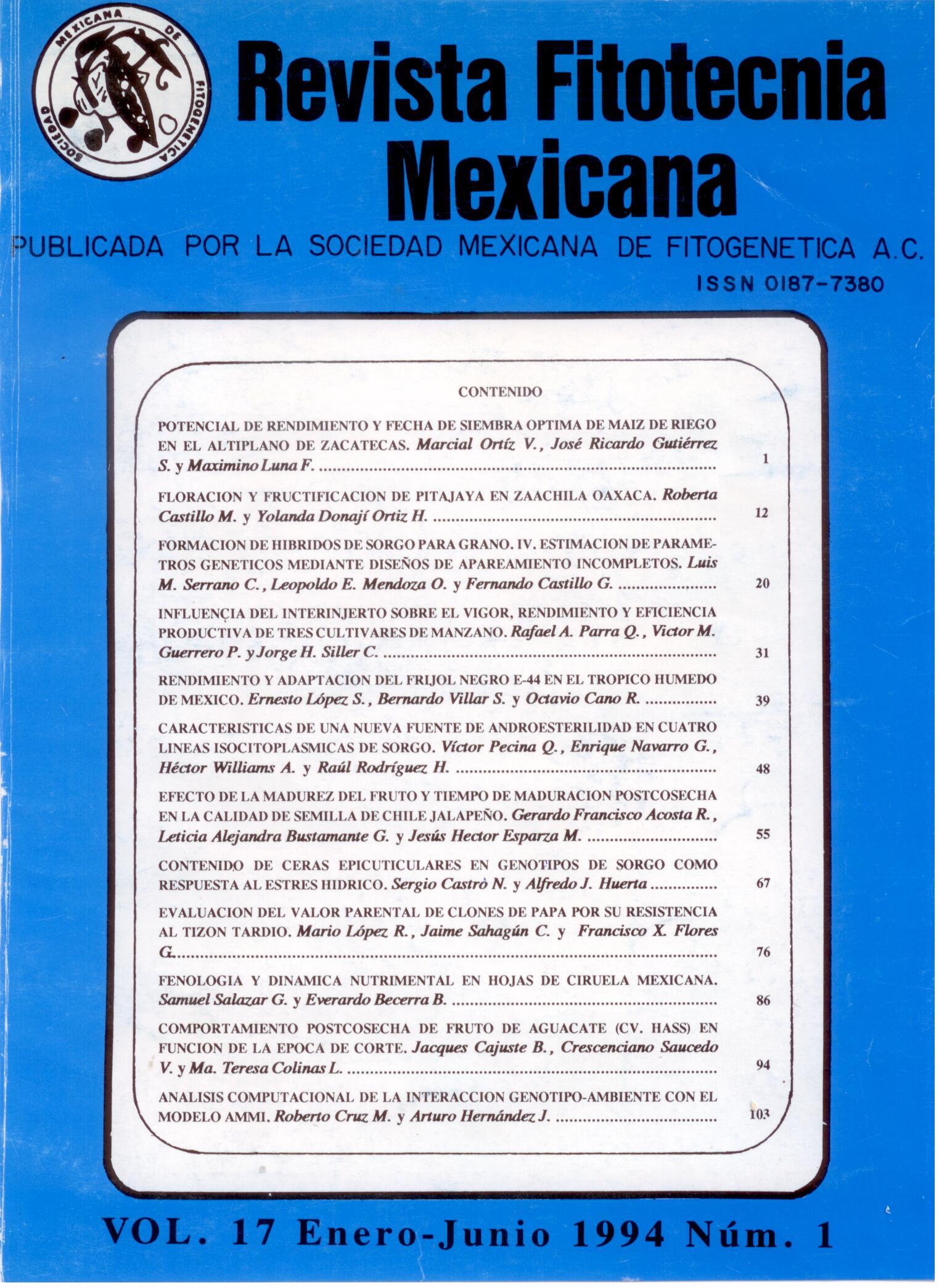EFFECT OF RIPENESS OF FRUIT AND TIME OF MADURATION POSTHARVEST ON JALAPEÑO PEPPER SEED QUALITY
Main Article Content
Abstract
The high demand of Jalapeño pepper seed (Capsicum annuum L.) and the lack of technology for high quality seed production brought out the present study during spring-summer season of 1991 at La Laguna Experimental Station. The study was conducted to determine the effect of fruit .maturity at harvest and postharvest maduration time on seed quality. Cultivar Jarocho was tested under a split plot design 3x3 factorial with four replications. Factors under study were fruit colour at harvest (green, part green-part red, red) and days to seed extraction after fruit harvest (1, 10, 20). The physic quality seed was tested with weight of pure seed (%), weight of 1000 seeds and volumetric weight; the physiological quality seed was determined by the tests of standard germination, accelerated ageing and total emergence. Seed from fruits harvested at part green-part red and red stage had higher percentajes of pure seed (93-96%) in the three times to seed extraction, whereas, the seeds of fruits part green-part red in extractions at ten and twenty days were higher in standard germination (94 and 92%). The seed of red fruits in the extraction at one day after harvest had higher emergence, with no statistical differences in seed extractions at ten and twenty days. As seed extraction was retarded, seed quality was increased linearly (pure seed percentaje) and quadraticly (normal germination, and emergence), with no statistical
differences in seed extractions at ten and twenty days. Fruit maturity and time of extraction interaction was highly significant for the variables in study. Seed from green fruits had better effects from postharvest maduration since higher quality was obtained as seed extraction was delayed.

